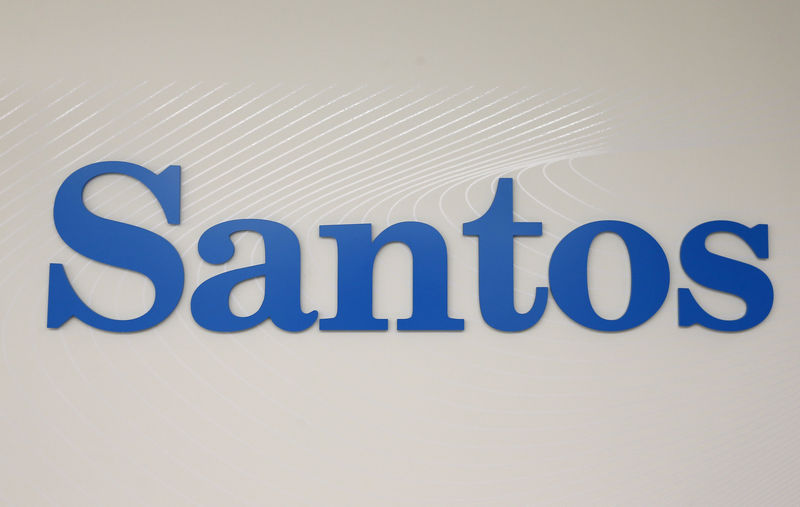By Sonali Paul and Henning Gloystein
MELBOURNE/SINGAPORE (Reuters) - Takeover interest in Australia's Santos (AX:STO), a company that not long ago was drowning in debt, shines a spotlight on a burgeoning hotspot for oil and gas producers: Papua New Guinea.
The South Pacific nation, one of the world's least explored countries but known for corruption and violence, has become a key source of growth for two of the world's biggest energy companies - ExxonMobil Corp (N:XOM) and Total SA (PA:TOTF) - looking to expand their liquefied natural gas (LNG) businesses.
With oil (LCOc1) and gas
Now private equity wants to get in on the game, with U.S.-based Harbour Energy eyeing a bid for Santos Ltd (AX:STO), Australia's no.2 independent gas producer, which has a 13.5 percent stake in ExxonMobil's Papua New Guinea LNG project (PNG LNG).
"As an acquisition, the prize jewels in Santos are its stakes in PNG LNG," said Saul Kavonic of energy consultancy Wood Mackenzie.
Investors are attracted by Papua New Guinea's high-yielding gas fields, with the gas rich in liquids that generate extra revenue, and easily exported to North Asia's booming markets as LNG on tankers.
Costs are low, a key to grabbing the next leg of growth in the LNG market, as plants in Australia and the United States flood the market with new supply.
Santos is not the only company to have caught the attention of investors because of its Papua New Guinea assets.
Oil Search (AX:OSH) limited, ExxonMobil's partner in PNG, fended off an $8 billion approach from Australia's biggest energy company, Woodside Petroleum (AX:WPL), two years ago, around the same time Santos rebuffed a bid from a fund backed by the royal families of Brunei and the United Arab Emirates.
ExxonMobil sealed its dominance in the country by taking over InterOil, another PNG player, for $2 billion (1.51 billion pounds) earlier this year after trumping a bid from Total and Oil Search.
Regrouping after Santos spurned an A$9.5 billion (5.44 billion pounds) approach, Harbour Energy may have to pay more than A$11 billion to snare its target in what would be one of the biggest oil and gas deals since Royal Dutch Shell (L:RDSa) took over BG Group to become the world's biggest listed LNG producer.
Santos was in deep trouble just a few years ago, struggling with high debt and low oil and gas prices. But asset sales, debt reduction and cost-cutting have led it back to health.
Some analysts now say a bid even at A$11 billion would be too low, in part due to its production costs, to which Papua New Guinea contributes.
"The company has been a turnaround story. By selling down poorly performing assets and driving efficiencies, management has brought down breakeven production costs an incredible 32 percent to $32 per barrel," said Cai Lewis, senior adviser at ASR Wealth Advisers.
Current Brent crude oil prices are above $60 per barrel.
Based on that, Lewis said an A$11 billion offer would be "too cheap".
(For a graphic on Santos shares vs spot LNG, click http://reut.rs/2zKOh28)
UNUSUAL PROJECT
Papua New Guinea is an unusual investment destination. The country to the north of Australia is one of Asia's poorest, remote, troubled by corruption and sporadic violence.
"The rate of crime in Papua New Guinea is among the highest in the world," the U.S. State Department said in its 2017 crime and safety report, warning of "violent crime, including gang rape, carjacking, home invasions, kidnappings, and armed robberies."
Also, much of the country is jungle-covered mountain, making access difficult.
Yet all this has not scared off investment into its gas resources.
Exxon was the first to make a foray, committing in 2009 to develop a $19 billion LNG export facility.
The project's remoteness required Exxon to charter huge Russian transport planes to fly in equipment, including gas turbines, to jungle airstrips.
Despite the challenges, ExxonMobil stunned markets by completing the project in 2014 ahead of schedule, and ramping up output at the plant, designed to produce 6.9 million tonnes a year, as high as 25 percent above nameplate capacity.
Enjoying low production costs and LNG prices that have jumped by 70 percent this year to almost $10 per million British thermal units, ExxonMobil plans to double output from PNG LNG by the mid-2020s by using gas from fields that it owns with partners Total, Oil Search and Santos.
They all agree it would be smarter and cheaper to expand PNG LNG than build a competing LNG plant.
"We have got to be the most cost-competitive out there... in order to attract that demand growth," ExxonMobil's head of investor relations, Jeff Woodbury, said in September.
PNG LNG stands in stark contrast to Australia's more expensive mega-projects, which have started up over the past two years after blowing budgets and schedules, and in some cases struggling to produce at capacity.
Santos's $18.5 billion Gladstone LNG project on Australia's east coast opened in 2015 at 15 percent over budget and does not have enough gas to fill the plant, now slated to reach only 75 percent capacity by 2019.

(For a graphic on Papua New Guinea population & GDP growth, click http://reut.rs/2zJvXGY)